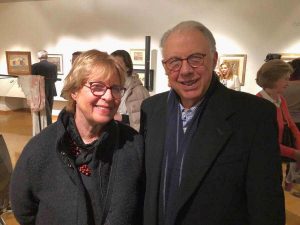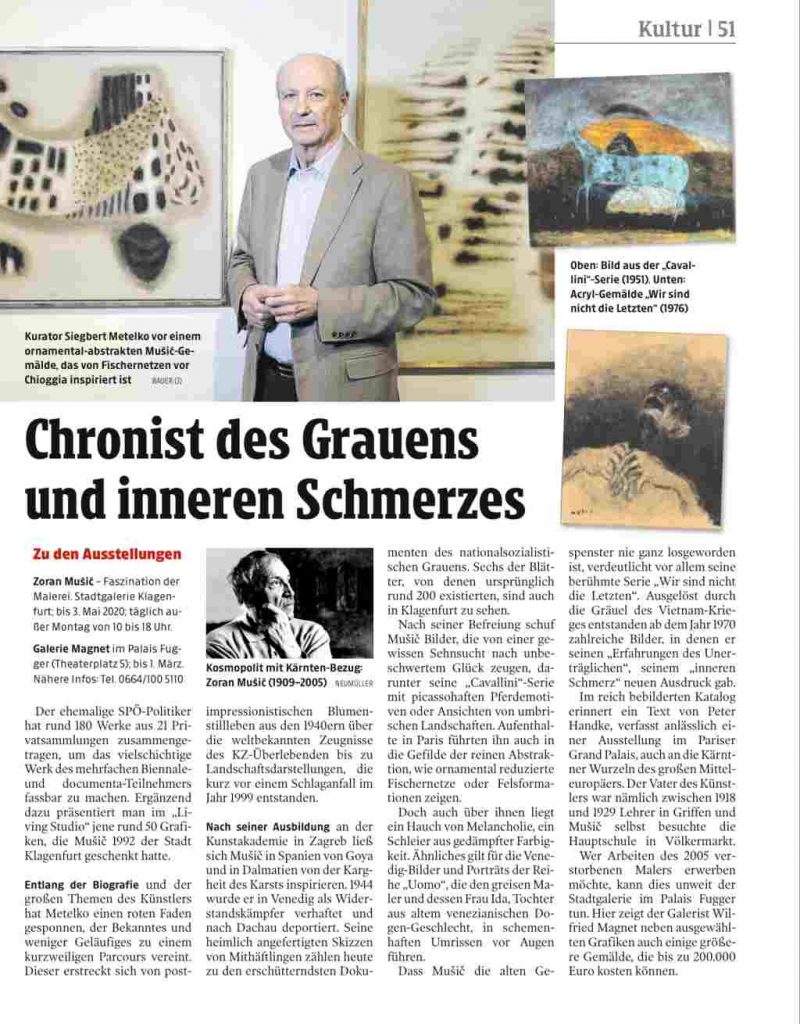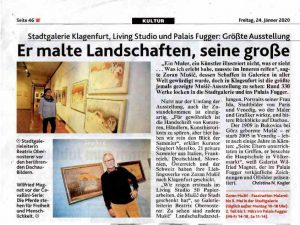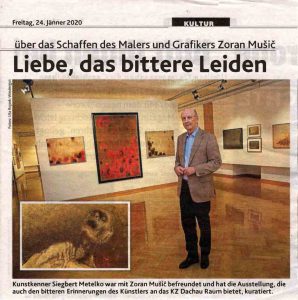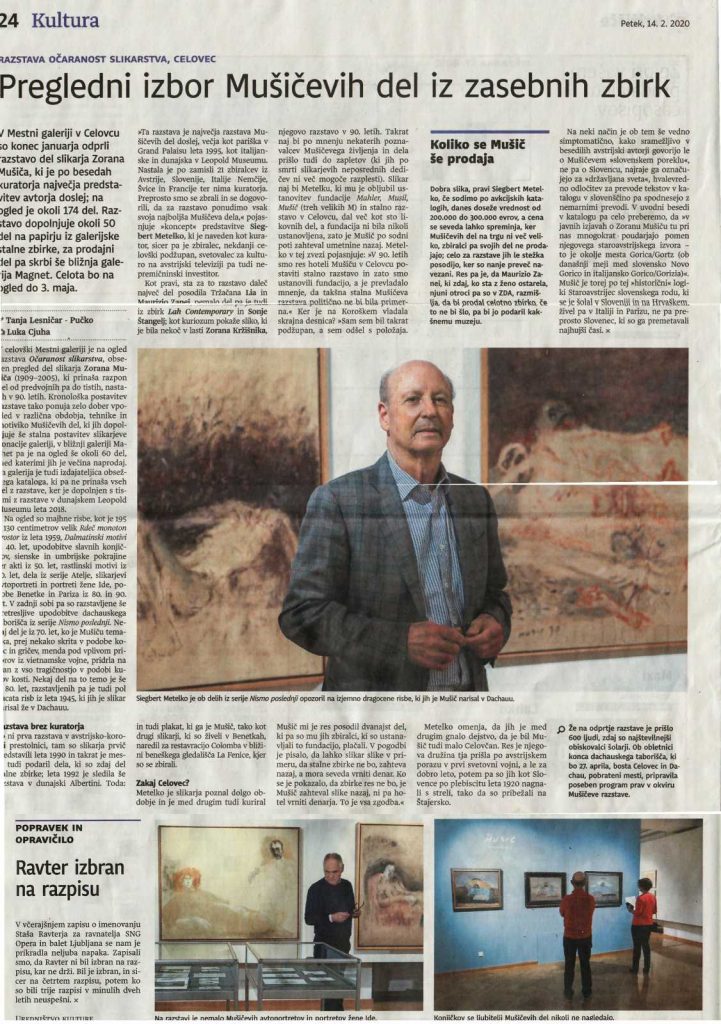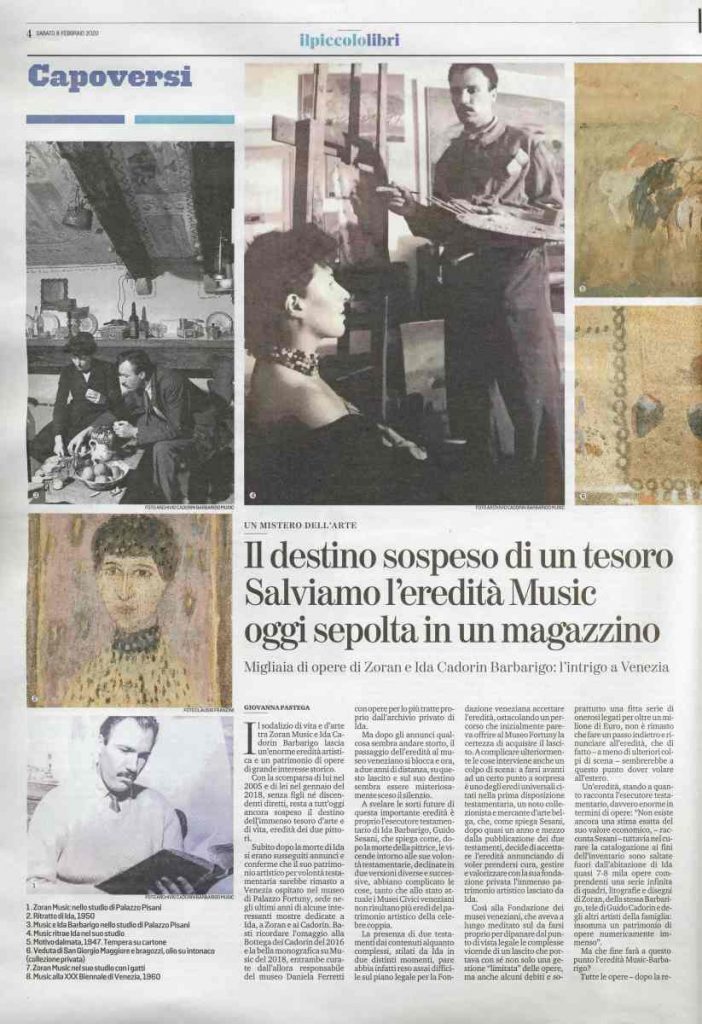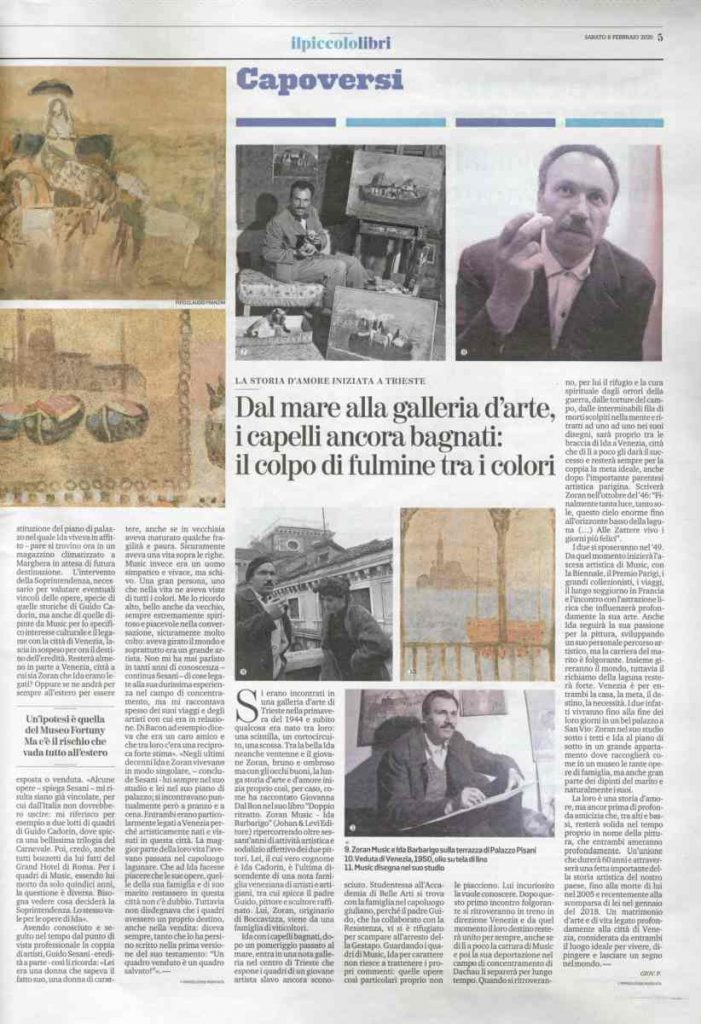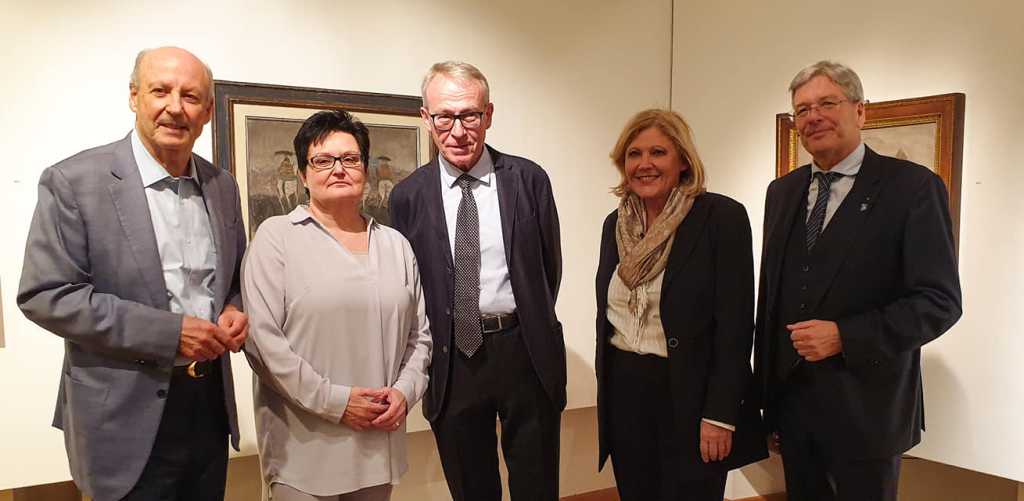
Excerpts from the opening speech by the curator of the exhibition, the music expert and art curator Siegbert Metelko:
… “This exhibition is neither the result of the deliberate arbitrariness of the professional estates, nor influenced by a dealer or gallery owner. For the first time, a music exhibition shows the view of 21 European collectors on the work of Zoran Music according to the motto “we show the best of our collections” …
… “It is also new that the artist himself is quoted through personal comments and statements on individual works and groups of works” …
… “If you want to understand the work of Zoran Music, you also have to deal with the question – where does Zoran Music come from? … .. What was the influence of his birth in the fateful area that we call Central Europe? ”…
… “There is a fascination with this work, which you have to make an effort about. If you do not get involved with the personality of the master and his story, you will not find access to his world … ”
… “At that time, Gorizia’s birthplace was still part of the Austro-Hungarian monarchy. They spoke Slovenian, German and Italian.
To give an idea of the mythical-historical term Central Europe, let’s take a look at the city of Gorizia / Gorizia / Gorica. It is a city that is neither ethnically nor historically definable: Metropolis once a county, to which both the blessed Collio belonged, and the valleys of today’s East Tyrol. Gorizia bordered the Republic of Venice, was culturally intimately connected with the lagoon city, but politically hostile. On one side the House of Austria, heir to the Counts of Görz, on the other the Venetians in their star-shaped fortress Palmanova. Through the mixed Italian-Friulian-Slavic population, he has become the painter of that mythical continent that we call Central Europe. The motifs of the art area of Veneto and Dalmatia and the aesthetics of the Byzantine tradition of these eastern areas formed the basis of his art. And ultimately the fate that can be summed up in a single word. DACHAU. ”
… “Music paints a requiem for human civilization, whether in cheerful Paris, in the karst or on its arbor in Venice” …
… “Music was a form of respect, nothing could shake him anymore: he had faced death every day for months.
Music allowed dying and death to enter the picture. The close proximity of death — music she has experienced, not in the provocative tickle of the Russian roulette, which makes death a calculable risk, but in existential experience. To be more precise, he had looked thousands of corpses in the snow, piled up like firewood on hills in front of the crematorium of the Dachau concentration camp. When a stack was burned, the next delivery came. Music drew these mounds of dead, secretly, if he could find a sheet of paper… ”
Zoran Music survived.
When he returned to Venice, he wrote in the Naviglio gallery catalog:
“Finally the big light, finally the sun, endless sky down to the low horizon of the lagoon, all of that is mine, here I can breathe freely … Is it really true that nobody is watching me? Is it reality that I am free to paint? ”
… “The happiness of a person who has lived in a world beyond all imagination speaks from a few sentences, in a world where DEATH is“ normal ”, where horror was everyday life“ …
From then on, Music viewed nature from this perspective. The lovely hills of Tuscany seemed to him like makeshift corpses, skeleton heaps. And again and again the silent cry came to him from the open mouths of the dead: “We are not the last, non siamo gli ultimi …” The artist will never stop until his own death, this cry in his pictures again and again articulate…
… Even decades after the horror images that were actually looked at, the night faces of deadly darkness caught up with the painter again.
And yet, Zoran Music was unshakable in itself. I often asked myself where he got his strength from. Perhaps he had become strong because he saw many deaths in his life and therefore died many deaths in advance. Perhaps he was in a similar situation to Dostoevsky, who had been arrested as a revolutionary-inspired young poet and was standing in front of an execution squad, tied to a post, tied to a post. A mock execution. Then he was read the pardon and the verdict: exile to Siberia. Under this impression he became a prophet among the Russian poets … Zoran Music became a prophet in Central Europe ……
Gallery owner Willi Magnet at the opening of the Zoran Music exhibition in the Stadtgalerie Klagenfurt: About Zoran Music, Unterkärnten and Peter Handke. (From the opening speech)
My interest in Zoran Music, an exceptional artist and special person, has deepened over the past 15 years.
The “Bacillus Music” has established itself in me and this far beyond my art dealership.
There are peculiarities in the biography of Music: His family moved to Lower Carinthia for 1 year and several months, especially Griffen and himself to Völkermarkt. After the end of the First World War (his father Anton Music served as a soldier on the side of the Austro-Hungarian army), father and mother Music, Zoran and also his younger brother Ljuban moved to Lower Carinthia, where his father taught griffen in elementary school.
The old elementary school, directly below the Schlossberg, was also the home of the small family. People settled in there for a longer period of time. They lived in an area occupied by Yugoslav troops at the time. Yugoslavia wanted to incorporate South Carinthia into its new state. Anton Music had obviously been appointed by the SHS administration as a teacher in this Lower Carinthian area.
Zoran himself, just 10 years old, had finished primary school and switched to a secondary school in Völkermarkt, where he lived in St. Ruprecht in the convent of the school sisters, like in a boarding school, to attend school there.
In autumn 1989 Music went back to his childhood in search of traces and made a remark to the school sisters when he visited Völkermarkt that he had gone to school here.
In 1920 the family left Music Griffen to live in Marburg / Maribor until 1923. Obviously the national pendulum was now moving in the other direction, because after the Carinthian referendum and southern Carinthia remaining with Austria, they were exposed to some hostility.
From the 1980s Peter Handke, Griffner himself, had also come across Zoran Music and these special features in common. This was soon followed by Handke’s visit to the Venice studio and the essay “Four Notes on Zoran Music and His Pictures” was created, which we published in May 2019 in our book “Zoran Music – Fascination of Painting” after 25 years and at the same time like everyone else translated three other texts into Slovenian, Italian and English.
Current press releases:
Virtual tour: exhibition “Fascination of painting” – ZORAN MUSIC, Stadtgalerie Klagenfurt
